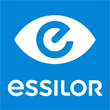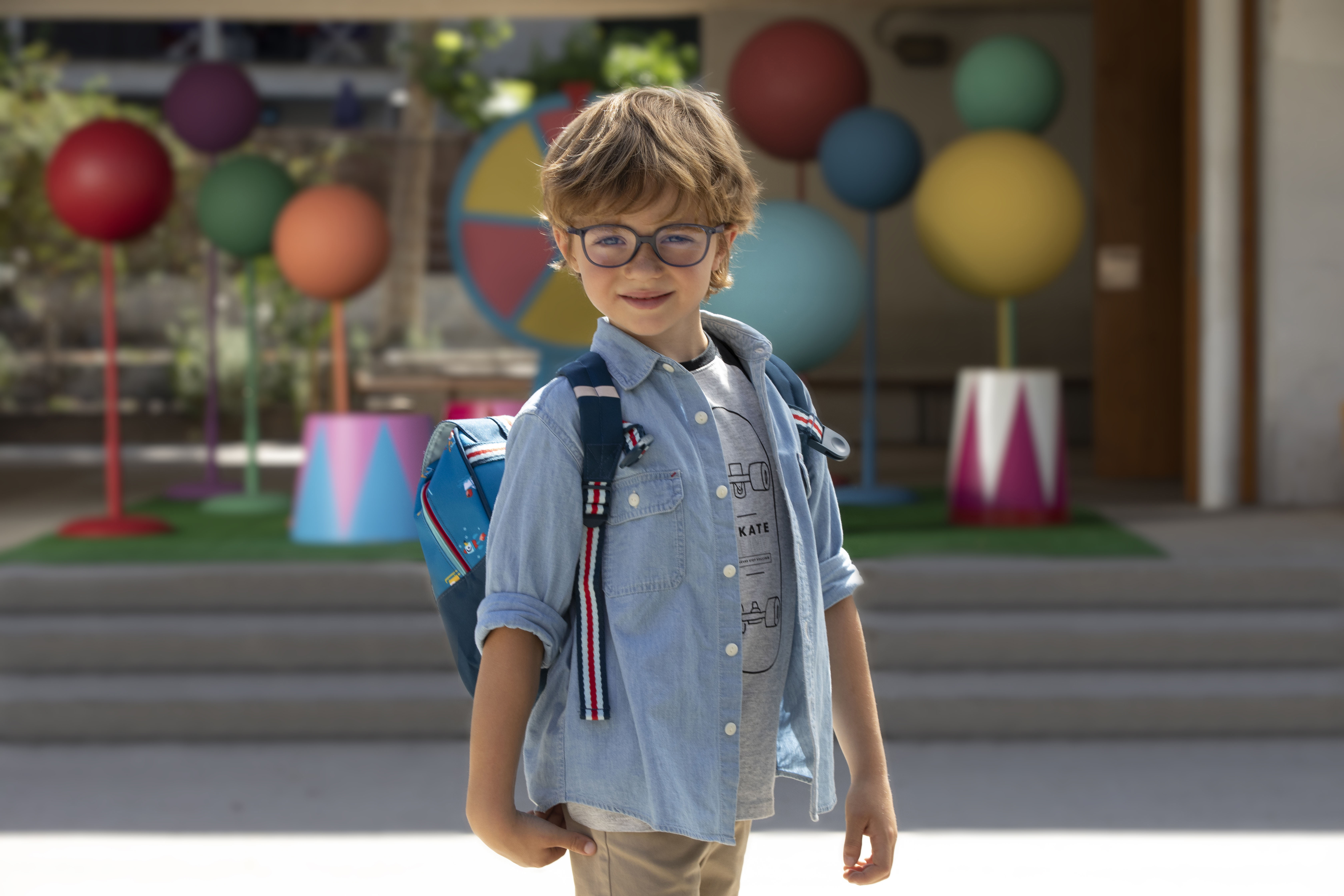- OT
- Industry
- Eyewear and lenses
- “We don’t believe the public realise how significant myopia is”
Advertorial
“We don’t believe the public realise how significant myopia is”
Charlotte Timbury, Essilor® Stellest™ lenses product and category manager at Essilor, explains how the company’s Stellest™ lens can help to prevent a future impaired by high myopia

Advertorial content is paid for and produced by a sponsor, and is reviewed and edited by the OT team before publication.
29 September 2022
Having gained more than 30 years of research and development experience in myopia, Essilor is very aware that the condition is a global problem.
With predictions that half of the world’s population will have myopia by 2050,14 and that a fifth of those will be considered to have high myopia, the company is committed to developing innovative and effective solutions to help slow down myopia progression in children.
Here, Essilor® Stellest™ lenses product and category manager, Charlotte Timbury, explains how the Essilor® Stellest™ lens works as part of our armour in preventing high myopia and its related ocular pathology in the future.
Can you tell us about the clinical studies that have taken place around Essilor® Stellest™ lenses?
A prospective, double-masked clinical trial at the Wenzhou Medical University in China showed that, after two years, Essilor® Stellest™ lenses slow down myopia progression on average by 67% (0.99D) and axial elongation by 60% (0.41mm) compared to single vision lenses, when worn 12 or more hours per day, every day.7
This two-year clinical trial enrolled children aged eight to 13 and showed that Essilor® Stellest™ lenses are efficient in slowing down myopia progression for younger or older children, regardless of gender and those with lower or higher degrees of myopia.7
The trial also demonstrated that wearing time considerably influenced the treatment outcome, with longer wearing hours resulting in better myopia control efficacy. These clinical trial results were recently published in JAMA Ophthalmology.7
In addition to the ongoing clinical trial, new results from a randomised, double-masked, year-on-year cross-over clinical trial were presented at the ARVO 2022 annual meeting. The trial evaluated the progression of myopia in 119 Vietnamese children wearing Essilor® Stellest™ lenses and Single Vision Lenses.
The randomised, double-masked, cross-over clinical trial demonstrates that Essilor® Stellest™ lenses slow myopia in children who already have the condition. Importantly, when children switched from Essilor Stellest lenses to single vision spectacle lenses, progression was similar to that observed with use of single vision spectacles and indicates no rebound of myopia. Compliance was high, with no differences compared to single vision lenses.11

How do the Essilor® Stellest™ lenses work?
The lens consists of a single vision zone and a myopia control zone, made with H.A.L.T1 technology.
The single vision zone ensures the correction of refractive error in all gaze directions, while the H.A.L.T technology creates a volume of non-focused light in front of the retina, a signal slowing down the eye elongation.
It has been shown in the literature that when the retina perceives two signals at the same time, one in front of the retina and the other behind it, the former prevails and protects the eye from elongation.2 Studies suggest that the power creating a volume of signal has a stronger efficacy than a surface of signal.4,5
What material is the Essilor® Stellest™ lens made from?
The lens delivers a first signal on the retina, the correction, through a single vision zone that carries the far prescription. This signal ensures sharp far vision, so that the child can carry out their everyday activities.
This is where the H.A.L.T1 technology comes into play. The technology consists of a constellation of 1021 contiguous lenslets, spread on 11 rings. The light that passes through the lenslets creates a volume of non-focused light in front of the retina, which follows the shape of a child’s theoretical myopic retina. This second signal plays the role of a myopia slow down signal.
Can you explain the volume of myopic defocus?
The aspherical lenslets are contiguous, and each ring is computed according to several geometrical and optical parameters. As mentioned, the light that passes through the H.A.L.T1 technology creates a volume of non-focused light in front of the retina and following its shape. This non-focused light is enough to efficiently play the role of a myopia slow down signal.
The lenses in practice
User experience: how vision compares with standard single vision lenses
- 90% of children are fully adapted to Essilor® Stellest™ lenses within three days6
- 100% of children are fully adapted within a week6
- 94% of children feel comfortable with lenses6
- There are no aesthetic compromises, due to the invisibility of the H.A.L.T technology9 teamed with the anti-reflection properties of the Crizal® Kids coating.
Are there any instructions on how children should use the lenses?
Ideally the child should wear Essilor® Stellest™ lenses during their whole waking day. The wearer trial results that show the lenses slow down myopia progression by 67% on average7 are based on children wearing them for a minimum of 12 hours per day, every day.
What happens if frames are poorly fitted?
Frame fitting is important to ensure an optimal vision experience, and this is also the case with Essilor Stellest lenses. Pantoscopic angle and vertex distance should be monitored so that it is suitable for the child’s frame and to make sure minimal slippage of frame occurs, ensuring the child is looking through the central vision zone.
Can you tell us about the guarantee?
Essilor® Stellest™ lenses in the UK and Ireland are covered by a prescription guarantee and a loss/breakage guarantee.
If the patient’s prescription changes by -0.50D or more within 12 months, a new pair Essilor® Stellest™ lenses will be provided free of charge.
If the optician makes a claim under the loss and breakage part of the guarantee, a new pair (with the same Rx) will be supplied at a low fixed cost of £20 / €20 for the pair.
Essilor® Stellest™ lenses: knowledge, tools and training for the practitioner
- Essilor’s local business development managers are on hand to train independent eye care practitioners and provide the tools they need to successfully dispense the lenses in their practice
- A myopia passport is sent out with every Essilor® Stellest™ lens order. The passport follows the patient’s journey, to help them track changes in their vision and encourage engagement with the practice. This tool is designed to help raise awareness, as we don’t believe the public realise how significant myopia is
- Support is available, including posters, patient leaflets and window stickers, to help engage patients in the practice
- Essilor runs monthly live and recorded webinar sessions on Essilor Stellest lens on its learning platform, Leonardo
- CPD content on myopia management is being offered to practitioners.
References
- H.A.L.T: Highly Aspherical Lenslet Target
- Tse D.Y et al. Simultaneous Defocus Integration during Refractive Development. Investigative Ophthalmology & Visual Science. 2007; 48(12). Pp5352-5359
- https://www.wspos.org/wspos-spectacle-frames-for-children-consensus-statement/
- Woods, J et al. Inhibition of defocus-induced myopia in chickens. Investigative Ophthalmology & Vision Science. 2013; 54, 2662–2668
- Irving, E.L. & Yakobchuk-Stanger, C. Myopia progression control lens reverses induced myopia in chicks. Ophthalmic & Physiological Optics. 2017; 37, 576–584
- Compared to single vision lenses, when worn by children at least 12 hours per day every day. Bao, J., Huang, Y., Li, X., Yang, A., Zhou, F., Wu, J., Wang, C., Li, Y., Lim, E.W., Spiegel, D.P., Drobe, B., Chen, H., 2022. Spectacle Lenses With Aspherical Lenslets for Myopia Control vs Single-Vision Spectacle Lenses: A Randomized Clinical Trial. JAMA Ophthalmol. 140(5), 472–478. https://doi.org/10.1001/jamaophthalmol.2022.0401
- Bao, J., Huang, Y., Li, X., Yang, A., Zhou, F., Wu, J., Wang, C., Li, Y., Lim, E.W., Spiegel, D.P., Drobe, B., Chen, H., 2022. Spectacle Lenses With Aspherical Lenslets for Myopia Control vs Single-Vision Spectacle Lenses: A Randomized Clinical Trial. JAMA Ophthalmol. https://doi.org/10.1001/jamaophthalmol.2022.040)
- Myopia control with spectacle lenses with aspherical lenslets: a 2-year randomized clinical trial. Invest. Ophthalmol. Vis. Sci.; 62(8):2888
- Aesthetic finish
- Bao J, Huang Y, Li X, et al. Spectacle Lenses With Aspherical Lenslets for Myopia Control vs Single-Vision Spectacle Lenses: A Randomized Clinical Trial. JAMA Ophthalmol. Published online March 31, 2022. doi:10.1001/jamaophthalmol.2022.0401
- Cheng, D., Woo, G.C., Drobe, B., Schmid, K.L., 2014. Effect of bifocal and prismatic bifocal spectacles on myopia progression in children: three-year results of a randomized clinical trial. JAMA Ophthalmol. 132, 258–264
- Bullimore MA, Brennan NA. Myopia Control: Why Each Diopter Matters. Optom Vis Sci 2019;96:463-5
- Progression of myopia with novel myopia control spectacle lenses. Rebecca Weng1, Huy Tran1,2, Daniel Spiegel3, Bjorn Drobe3, Thomas Naduvilath1, Padmaja Sankaridurg1,4 1Brien Holden Vision Institute;2Haiyen Eye Care; 3R&D Vision Sciences AMERA, Essilor International SAS; 4University of New South Wales
- Holden BA, Fricke TR, Wilson DA, et al. Global Prevalence of Myopia and High Myopia and Temporal Trends from 2000 through 2050. Ophthalmology. 2016;123(5):1036-1042. doi:10.1016/j.ophtha.2016.01.006.



